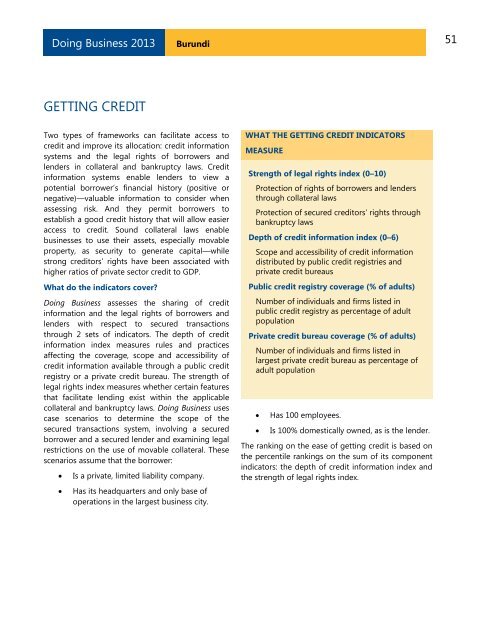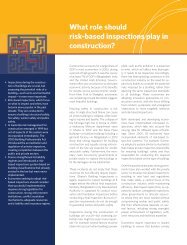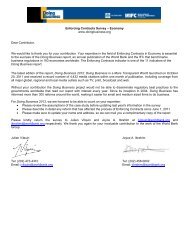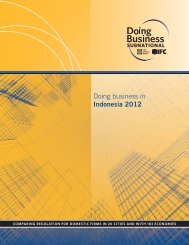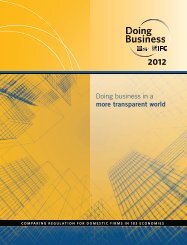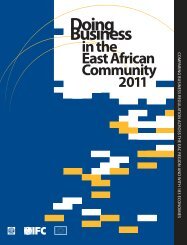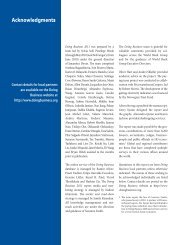Economy Profile: Burundi - Doing Business
Economy Profile: Burundi - Doing Business
Economy Profile: Burundi - Doing Business
You also want an ePaper? Increase the reach of your titles
YUMPU automatically turns print PDFs into web optimized ePapers that Google loves.
<strong>Doing</strong> <strong>Business</strong> 2013<br />
<strong>Burundi</strong><br />
51<br />
GETTING CREDIT<br />
Two types of frameworks can facilitate access to<br />
credit and improve its allocation: credit information<br />
systems and the legal rights of borrowers and<br />
lenders in collateral and bankruptcy laws. Credit<br />
information systems enable lenders to view a<br />
potential borrower’s financial history (positive or<br />
negative)—valuable information to consider when<br />
assessing risk. And they permit borrowers to<br />
establish a good credit history that will allow easier<br />
access to credit. Sound collateral laws enable<br />
businesses to use their assets, especially movable<br />
property, as security to generate capital—while<br />
strong creditors’ rights have been associated with<br />
higher ratios of private sector credit to GDP.<br />
What do the indicators cover?<br />
<strong>Doing</strong> <strong>Business</strong> assesses the sharing of credit<br />
information and the legal rights of borrowers and<br />
lenders with respect to secured transactions<br />
through 2 sets of indicators. The depth of credit<br />
information index measures rules and practices<br />
affecting the coverage, scope and accessibility of<br />
credit information available through a public credit<br />
registry or a private credit bureau. The strength of<br />
legal rights index measures whether certain features<br />
that facilitate lending exist within the applicable<br />
collateral and bankruptcy laws. <strong>Doing</strong> <strong>Business</strong> uses<br />
case scenarios to determine the scope of the<br />
secured transactions system, involving a secured<br />
borrower and a secured lender and examining legal<br />
restrictions on the use of movable collateral. These<br />
scenarios assume that the borrower:<br />
• Is a private, limited liability company.<br />
• Has its headquarters and only base of<br />
operations in the largest business city.<br />
WHAT THE GETTING CREDIT INDICATORS<br />
MEASURE<br />
Strength of legal rights index (0–10)<br />
Protection of rights of borrowers and lenders<br />
through collateral laws<br />
Protection of secured creditors’ rights through<br />
bankruptcy laws<br />
Depth of credit information index (0–6)<br />
Scope and accessibility of credit information<br />
distributed by public credit registries and<br />
private credit bureaus<br />
Public credit registry coverage (% of adults)<br />
Number of individuals and firms listed in<br />
public credit registry as percentage of adult<br />
population<br />
Private credit bureau coverage (% of adults)<br />
Number of individuals and firms listed in<br />
largest private credit bureau as percentage of<br />
adult population<br />
• Has 100 employees.<br />
• Is 100% domestically owned, as is the lender.<br />
The ranking on the ease of getting credit is based on<br />
the percentile rankings on the sum of its component<br />
indicators: the depth of credit information index and<br />
the strength of legal rights index.


